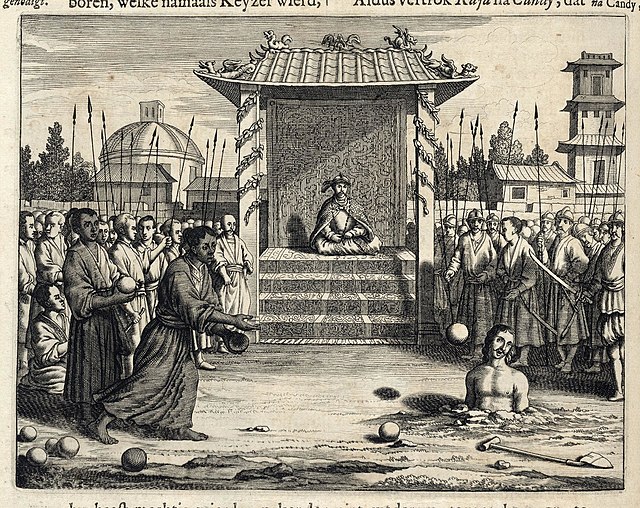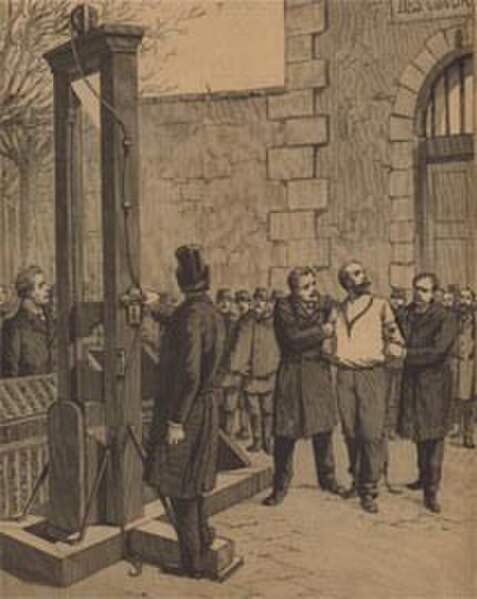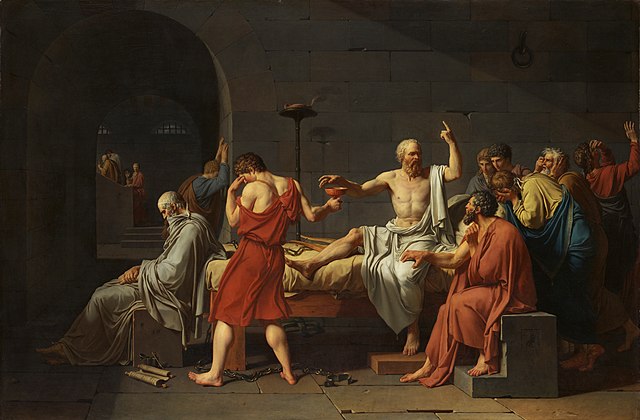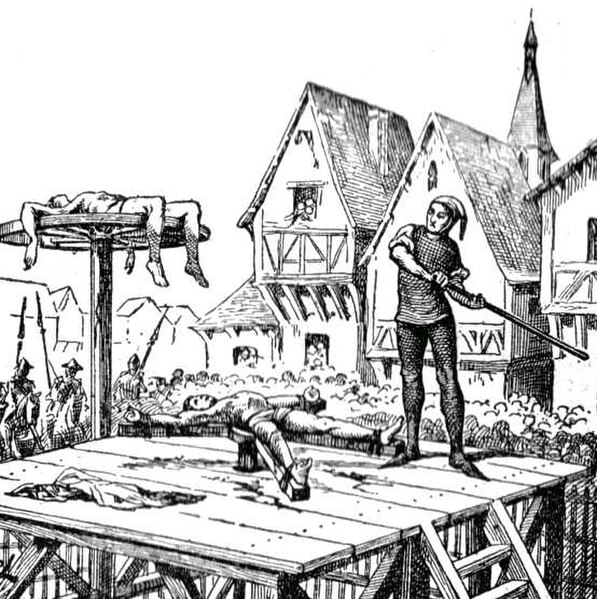Stoning, or lapidation, is a method of capital punishment where a group throws stones at a person until the subject dies from blunt trauma. It has been attested as a form of punishment for grave misdeeds since ancient times.
Saint Stephen, first martyr of Christianity, painted in 1506 by Marx Reichlich (1460–1520) (Pinakothek of Munich)
Virasundra is stoned to death on the order of Rajasinha II of Kandy (Sri Lanka, c. 1672)
The Sabbath-breaker Stoned. Artistic impression of episode narrated in Numbers 15. James Tissot c.1900
The Punishment of Korah and the Stoning of Moses and Aaron (1480–1482), by Sandro Botticelli, Sistine Chapel, Rome.
Capital punishment, also known as the death penalty and formerly called judicial homicide, is the state-sanctioned practice of killing a person as a punishment for a crime, usually following an authorised, rule-governed process to conclude that the person is responsible for violating norms that warrant said punishment. The sentence ordering that an offender be punished in such a manner is known as a death sentence, and the act of carrying out the sentence is known as an execution. A prisoner who has been sentenced to death and awaits execution is condemned and is commonly referred to as being "on death row". Etymologically, the term capital refers to execution by beheading, but executions are carried out by many methods, including hanging, shooting, lethal injection, stoning, electrocution, and gassing.
Anarchist Auguste Vaillant about to be guillotined in France in 1894
The Christian Martyrs' Last Prayer, by Jean-Léon Gérôme (1883). Roman Circus Maximus.
The Death of Socrates (1787), in the Metropolitan Museum of Art in New York City
The breaking wheel was used during the Middle Ages and was still in use into the 19th century.








